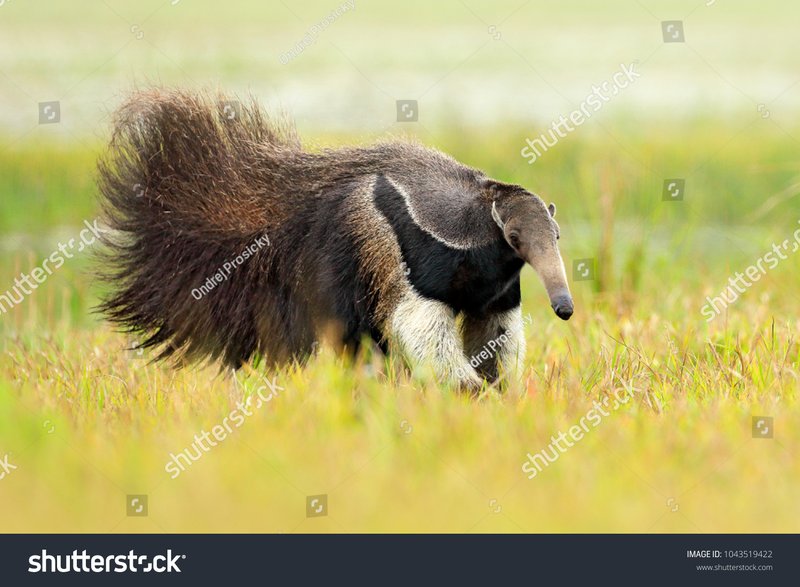
The Anteater’s Diet: A Specialized Skill
Anteaters primarily feast on ants and termites, which can be found in many habitats across Central and South America. While that might sound simple, finding food isn’t always easy. Picture a treasure hunter seeking hidden gems in a vast sea of sand. Anteaters use their keen sense of smell to sniff out ant hills and termite mounds, sometimes digging deep to access their favorite snacks. This ability to locate food is crucial, especially in environments where resources can be scarce.
One of the most interesting aspects of their diet is how they consume their food. Anteaters have long, sticky tongues that can stretch up to 16 inches! This unique adaptation allows them to reach deep inside tunnels and nests. Honestly, that tongue is like a flexible tool designed perfectly for their culinary ambitions. When they find a mound, they can quickly slurp up hundreds of insects in a single meal. Talk about a buffet!
Physical Adaptations: Nature’s Design
Anteaters have some pretty remarkable physical features that help them survive. Their long snouts and sharp claws are significant parts of their toolkit. Those claws aren’t just for show; they are strong enough to tear apart ant hills and defend against predators. It’s like they come equipped with built-in tools for survival!
Also, their fur is thick and acts as insulation. In hotter climates, this might sound counterintuitive, but it actually helps to keep them cool by reflecting sunlight. You might be wondering how this works—having a light-colored fur coat allows them to regulate their body temperature better, even when the sun is blazing down. Think of it as wearing a sun hat; it offers protection while still allowing you to enjoy your day out!
Behavioral Strategies for Survival
Behavior plays a crucial role in how anteaters manage in harsh environments. For instance, they are mostly solitary creatures, meaning they spend a lot of time on their own. While that might sound lonely, it helps them avoid competition for food. When you’re out in the wild, finding your own turf can be the key to survival, and anteaters have mastered this art.
When it comes to staying safe from predators, anteaters tend to keep a low profile. They often rely on their excellent camouflage to blend into their surroundings. Imagine playing hide-and-seek and knowing just how to conceal yourself perfectly. Anteaters can stay still for long periods, which helps them avoid detection by hungry eyes. If threatened, they can also stand on their hind legs and use those long claws to defend themselves—making them a tough opponent in any skirmish!
Water Sources: Finding Moisture in the Wild
Living in dry environments can pose a challenge when it comes to finding water. However, anteaters are pretty clever about this too. They usually get enough moisture from the insects they eat, which can be surprisingly hydrating. In fact, a diet rich in ants and termites provides them with a lot of the liquid they need to survive.
That said, if they need extra water, anteaters will often venture to nearby streams or ponds. They may not drink like many animals do, but they’re adept at lapping up water when they find it. Picture them as the ultimate scavengers—using every opportunity in their environment to stay hydrated and healthy.
Adapting to Climate Change
Like many wildlife species, anteaters face challenges from climate change, which can disrupt their habitats and food sources. Changes in temperature and rainfall patterns can affect insect populations, leaving anteaters to adapt on the fly. Here’s the thing: evolution is slow, but these creatures have developed some resilience over time.
In response to these shifts, anteaters have become more mobile, searching for food more widely than before. This behavior shows just how adaptable they can be. They’ve learned to follow seasonal changes, searching for food in areas that might have been less crowded in the past. It’s a survival instinct that keeps them in tune with their environment, much like how we adjust our clothing based on the weather.
The Importance of Conservation
Sadly, anteaters face threats from habitat loss and human activities. Deforestation, agriculture, and urbanization encroach on their natural habitats, making survival more challenging. Preserving their environment is crucial—not just for the anteaters but for the entire ecosystem. When one species is threatened, it can have a ripple effect on others, including those insects that anteaters rely on for food.
Conservation efforts are vital in protecting these unique creatures. By supporting wildlife reserves and organizations dedicated to preserving their habitats, we can help ensure that anteaters continue to thrive in their harsh environments. Honestly, it’s a small way we can give back to the planet and its incredible biodiversity.
Anteaters are fascinating creatures that exemplify resilience and adaptation. From their specialized diet to their unique physical traits and behaviors, they navigate harsh conditions with a blend of skill and instinct. With ongoing challenges from climate change and habitat loss, understanding how anteaters survive is more important than ever. By nurturing their habitats and raising awareness about their needs, we can help ensure these remarkable animals continue to thrive for generations to come. So next time you think of the harsh environments of the animal kingdom, remember the anteater and their incredible journey of survival.

